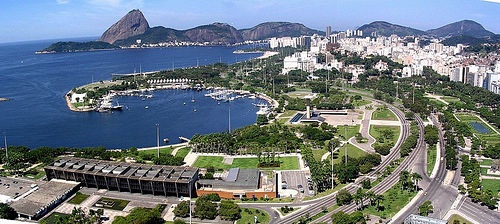Stocks and Flows in Rio de Janeiro
FC-01x Future Cities (1st Run) - Exercise 2: "Stocks and Flows"

Uploaded on 2015-06-16 by MauricioAfc
Land: because Rio is a coastal city and it's relief is mountainous, it doesn't have much area to build up. To worsen that, most of Rio urbanism is thinked in order to make the city look like Paris or Miami, because of that since the beginning of the XX century we´ve been landing sea areas or knocking down some hills, examples of this are the construction of Aterro do Flamengo, the construction of Aterro da Lagoa and the demolishing of Morro do Castelo. Since almost all of Rio hills are occupied by slums and we cannot obliterate them anymore, in the 90's there was a spontaneous expansion of the city by migrations towards the west that built the area of Barra da Tijuca. Nowadays Barra is crowded and with a lack of infrastructure, that's why the city government, in order to expand the build up areas started developing the project of a big revitalization plan that consists in the occupancy of dangerous areas with high levels of violence encouraging culture, tourism and estate speculation with state-of-the-art museums and buildings. Pollution: Generally in Rio -and we can extend this to Brazil- the environmental laws and measures are neither monitored nor respected and the stock of pollution forming heat islands has a main role in diminishing quality of life of citizens and the livability of the city. Maybe this sounds surprising for foreigners because of the climate conferences that are located here, but in the suburbs we have transnational industries that pollute the air and water that is consumed by a big amount of people, we also don't have real policies to encourage citizens to abandon their cars that are responsible for big traffic jams, noise pollution, air pollution and use public transportation, in fact we just have some preventive policies that try to diminish the terrible scenario of all public means of transportation. To the first problem the solution is all about politics, to the second problem a possible solution is making big investments in integrating the different areas of the city with subways and trains and expanding the number of bike paths and bus lines for short routes. Food: All of the food consumed in Rio comes from other places and a lot of energy, water, time is consumed and the effect if it is pollution, traffic jams, more waste. We don't have good logistics when it comes to goods transportation and all is made by road system. To try to solve this, we should instigate roof vegetable gardens and reduce the necessity of outside good, maybe it can be achieved reducing taxes policies for buildings with green roofs and constructing express ways for transportation trucks. ![Aterro do Flamengo][1] ![Porto Maravilha][2] ![reforma Pereira Passos 1909][3] [1]: https://c3.staticflickr.com/3/2484/3788270843_8ab5f34eb5.jpg [2]: http://s3.amazonaws.com/mitx_askbot_stage//14344911532255457.jpg [3]: http://s3.amazonaws.com/mitx_askbot_stage//14344911966743616.jpg All the images are from Google